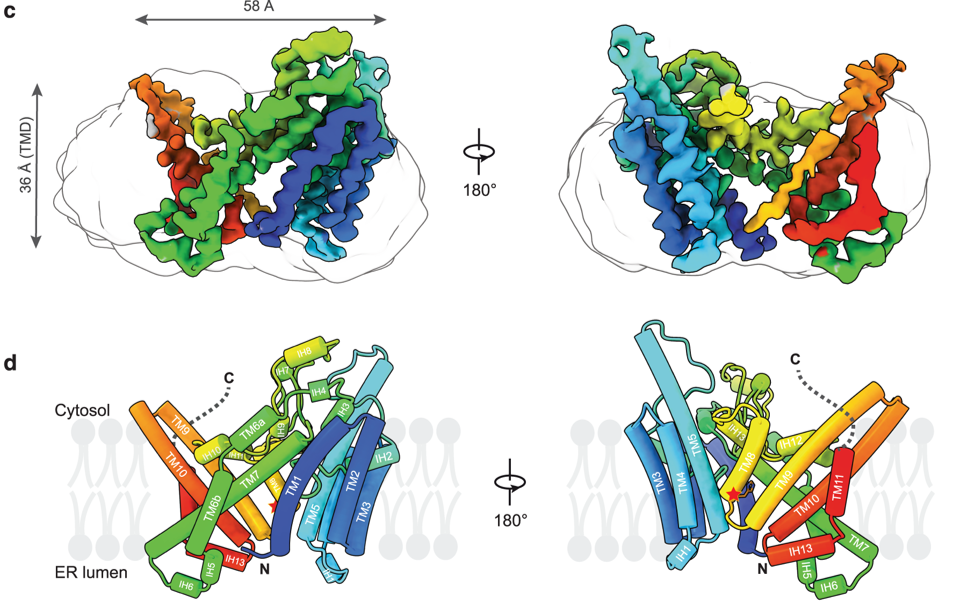Home > Publications
Wang K, Lee CW, Sui X, Kim S, Wang S, Higgs AB, Baublis AJ, Voth GA, Liao M#, Walther TC#, Farese RV Jr#
doi: 10.1038/s41467-023-38932-5
The structure of phosphatidylinositol remodeling MBOAT7 reveals its catalytic mechanism and enables inhibitor identification. Nat Commun. 2023 Jun 14;14(1):3533. doi: 10.1038/s41467-023-38932-5. PMID: 37316513; PMCID: PMC10267149.
Cells remodel glycerophospholipid acyl chains via the Lands cycle to adjust membrane properties. Membrane-bound O-acyltransferase (MBOAT) 7 acylates lyso-phosphatidylinositol (lyso-PI) with arachidonyl-CoA. MBOAT7 mutations cause brain developmental disorders, and reduced expression is linked to fatty liver disease. In contrast, increased MBOAT7 expression is linked to hepatocellular and renal cancers. The mechanistic basis of MBOAT7 catalysis and substrate selectivity are unknown. Here, we report the structure and a model for the catalytic mechanism of human MBOAT7. Arachidonyl-CoA and lyso-PI access the catalytic center through a twisted tunnel from the cytosol and lumenal sides, respectively. N-terminal residues on the ER lumenal side determine phospholipid headgroup selectivity: swapping them between MBOATs 1, 5, and 7 converts enzyme specificity for different lyso-phospholipids. Finally, the MBOAT7 structure and virtual screening enabled identification of small-molecule inhibitors that may serve as lead compounds for pharmacologic development.
